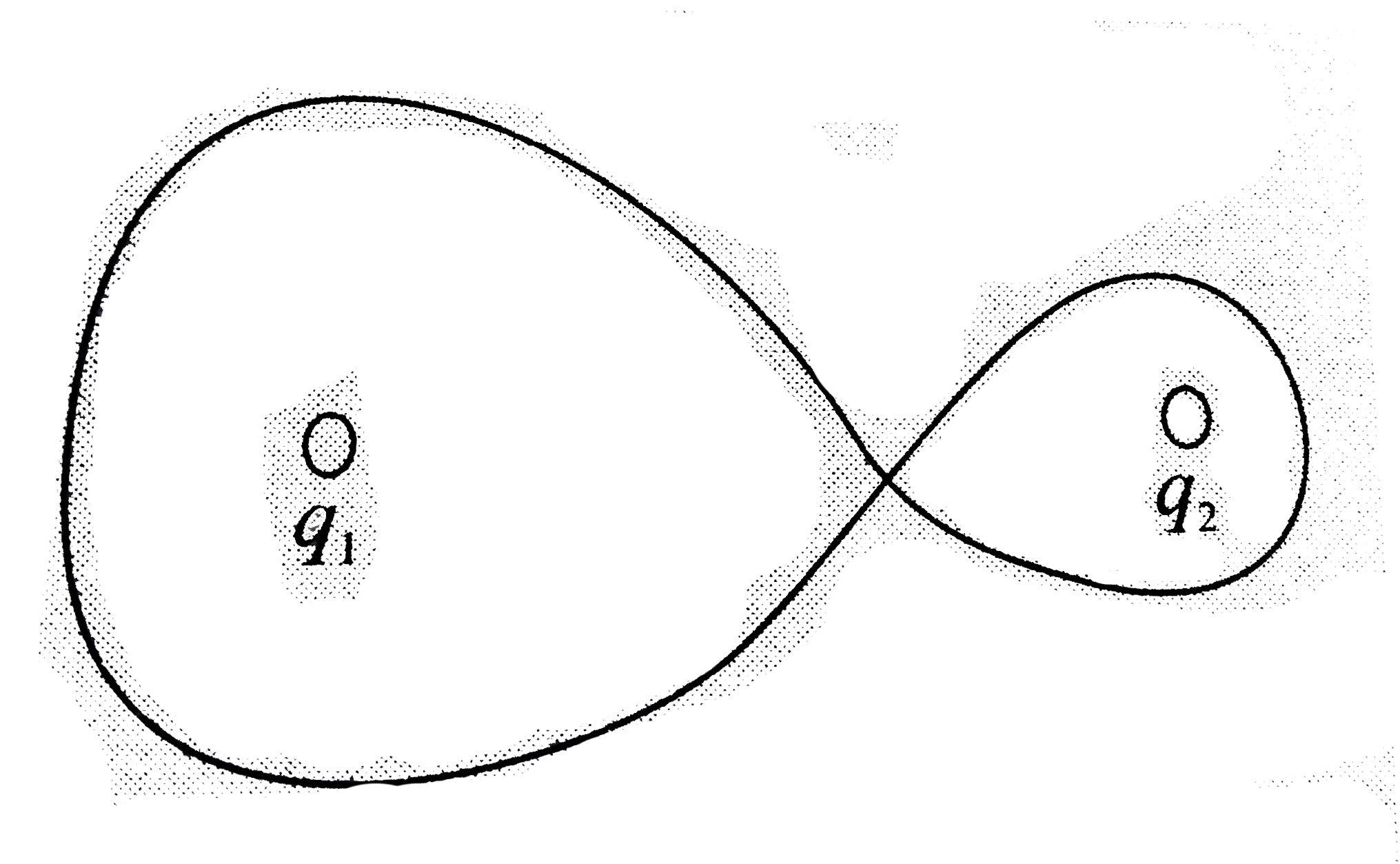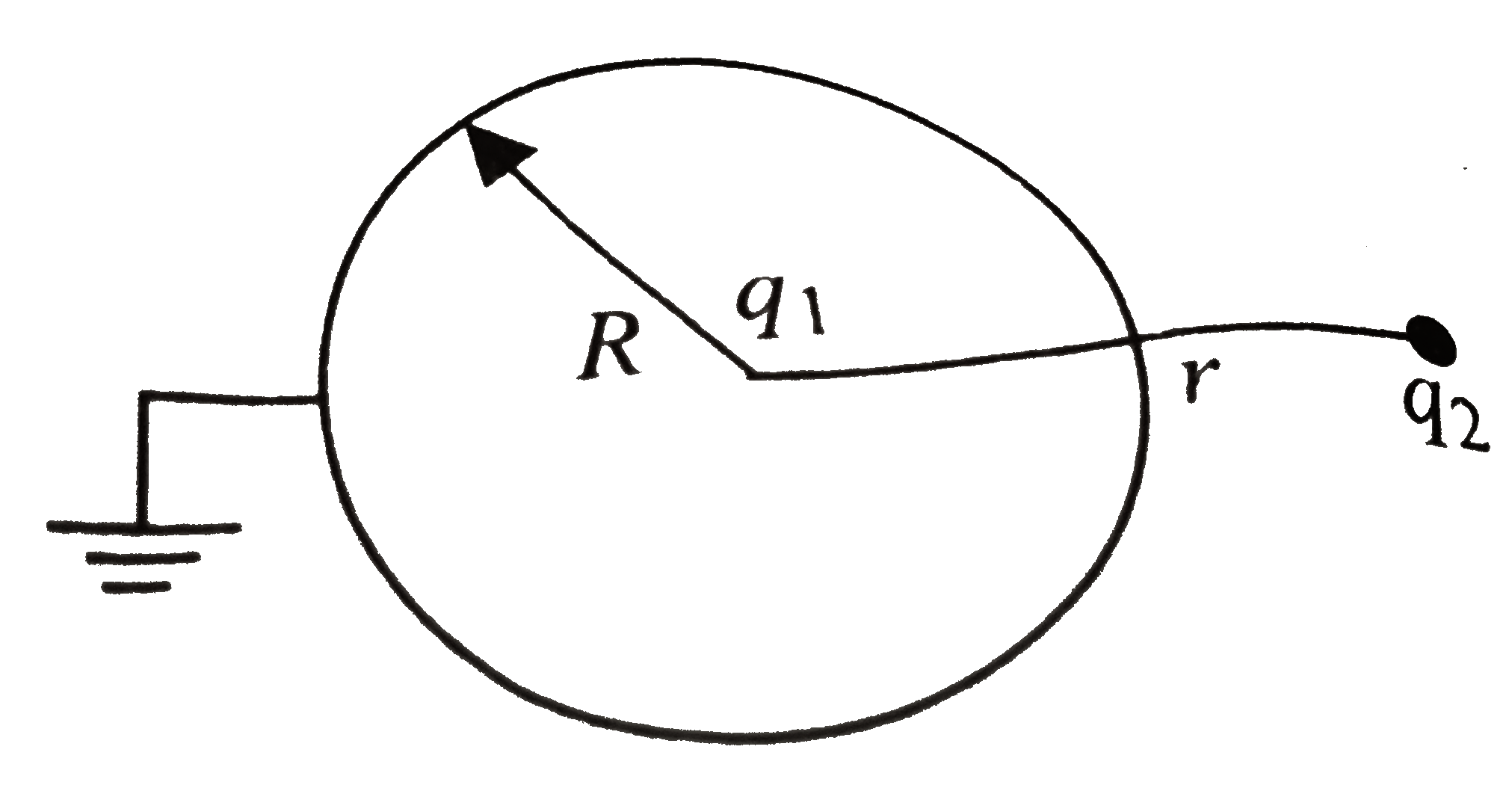Charge q1 is fixed and another point charge q2 is placed at a distance r0 form q1 on a frictionless horizontal surface.Find the velocity of q2 as a function of seperation r between them (treat the changes as point charges and mass of q2 is m)

Accoding law of concervation energy
U1+K1=U(2)+K2
14πε0q1q2r0+0=14πε0=14πε0q1q2r+12mv2
12mv2=q1q24πε0[1r0−1r],v=√q1q22πε0m[1r0−1r]
Topper's Solved these Questions
- BOOK - NARAYNACHAPTER - ELECTROSTATICS AND GAUSS LAWEXERCISE - C.U.Q133videos
ELECTROSTATICS AND GAUSS LAW
- BOOK - NARAYNACHAPTER - ELECTROSTATICS AND GAUSS LAWEXERCISE - Level 1(C.W)24videos
ELECTROSTATICS AND GAUSS LAW
- BOOK - NARAYNACHAPTER - ELECTROSTATIC POTENTIAL AND CAPACITANCEEXERCISE - ADDITIONAL PROBLEMS14videos
ELECTROSTATIC POTENTIAL AND CAPACITANCE
- BOOK - NARAYNACHAPTER - EXPERIMENTAL PHYSICSEXERCISE - Comprehension type6videos
EXPERIMENTAL PHYSICS
Similar Questions
Consider a fixed charge Q and another charge q is placed at a distance x0 from Q on a smooth plane surface. Find the velocity of charge q as a function of x.
⎡⎣[Qq2π∈0m{1x0−1x}]12⎤⎦View SolutionA positive point charge q1 is placed at (a,0) and another positive point charge q2 is placed at (0,a) . Find the force acting on q1.
View Solution
Knowledge Check
- Question 1 - Select One
Magnitude of force between two point charges q1 and q2 which are separated by a distance r is given by
AF=k|q1q2|rBF=k|q1q2|rr2CF=k(|q1q2|r)2DF=k|q1q2|r2 - Question 2 - Select One
Charge q2 of mass m revolves around a stationary charge q1 in a circulare orbit of radius r. The orbital periodic time of q2 would be
A[4π2mr3kq1q2]1/2B[kq1q24π2mr3]1/2C[4π2mr4kq1q2]1/2D[4π2mr2kq1q2]1/2 - Question 3 - Select One
A point charge q is placed at a distance a2 directly above the centre of a horizontal square of side 'a' and another point charge -q is placed at a distance 'a' directly below one of its (the square's) corners. The electric flux through the square is :
Aq6∈0Bq8∈0Cq24∈0D5q24∈0
Two point charges q1, and q2 are kept at a distance of r12 in air. Deduce the expression for the electrostatic potential energy of this system.
View SolutionTwo point like charges q1 and q2 are fixed in free space. At every point on the curve shown, the net electrostatic potential created by these charges is V. Find the separation r between the charges.
 .View Solution
.View SolutionTwo point charges Q and q are placed at distance r and r2 respectively alogn a straigt line from a third charge 4q. If q is in equilibrium determine Qq.
View SolutionTwo charge +q and −q are placed at distance r. Match the following two columns when distance between them is charged to r'.
 View Solution
View SolutionA conducting spherical shell is earthed. A positive charge +q1 is placed at the center and another small positive charge +q2 is placed at a distance r from q1. Ignore the effect of induced charge due to q2 on the sphere. Then the coulomb force on q2 is
 View Solution
View Solution

